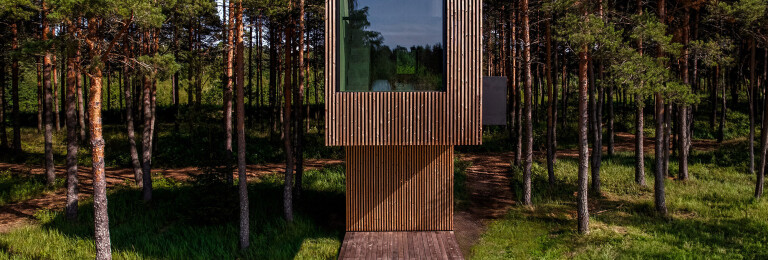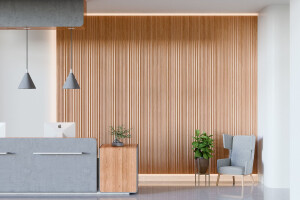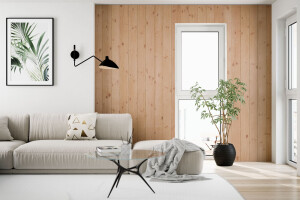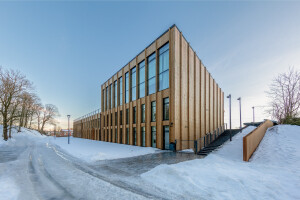Benchmark thermo-pine sets a new standard for softwood cladding. Thermal modification makes the pine more durable and stable while emphasizing its warm golden-brown color and characteristic knot pattern – all without any chemicals.
Thermory offers a wide range of profiles, including profiles that allow for hidden fixing, enabling a flawless finish and easy deck installation.
Durable and environmentally friendly
Thermory Benchmark thermo-pine decking is perfect for you if you enjoy the characteristic charm of pine but you need a more durable result.
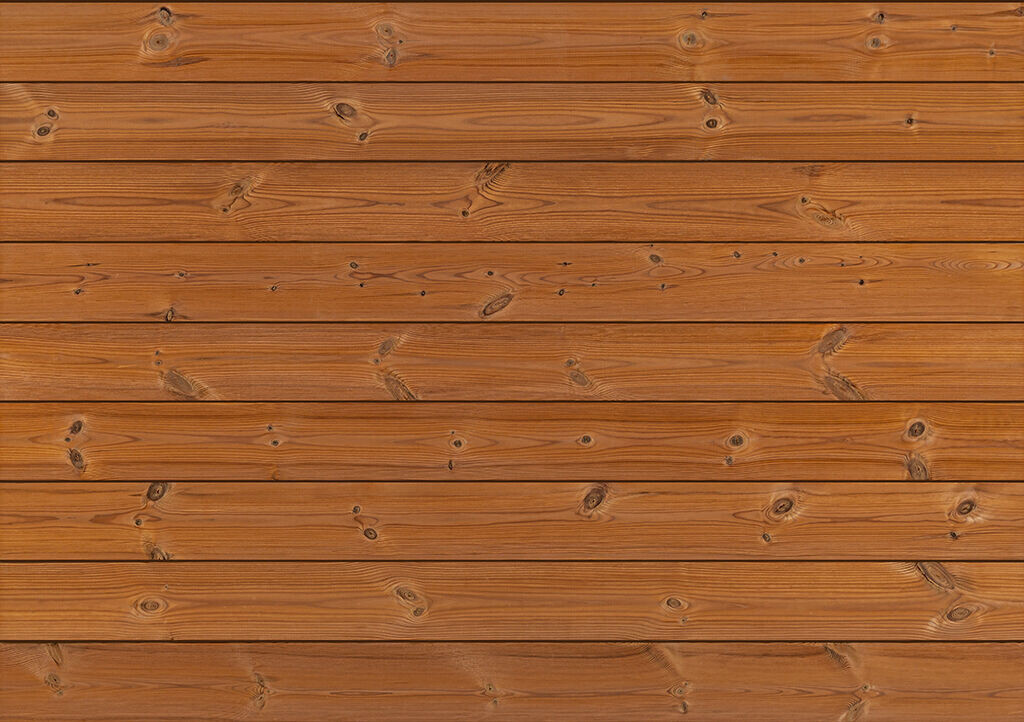
Thermal modification increases the durability of pine (class 2, 15+ years), which is extremely important for outdoor use. The lower moisture absorption capability and rate of thermally modified wood results in less moisture-induced deformation, making it a great choice for outdoor use. Thermal modification gives pine a beautiful golden-brown tone.
In addition to being durable, the thermally modified pine is environmentally friendly, as the thermal modification process is chemical free and no harmful waste is generated. Thermo-pine decking is offered with theNordic Swan Ecolabel, which certifies that the wood originates from responsibly managed forests, is free of chemicals and is extremely durable when used outdoors.
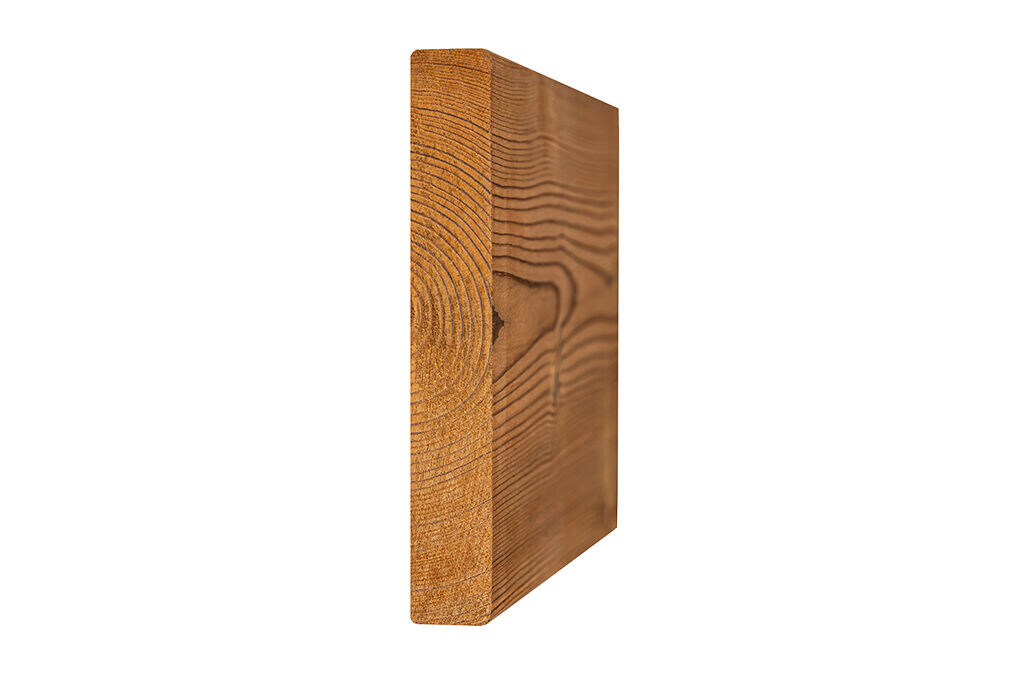
The exceptional mechanical properties of Pine
Scots pine (Pinus sylvestris) is a coniferous tree of the pine family, which is widespread in Europe and Asia. Wood from Nordic pine trees is highly valued for its mechanical properties, and this quality material is characterized by evenly spaced annual rings. Pine is well suited for thermal modification as it becomes significantly more durable and stable through the process, acquiring a beautiful golden-brown tone.

Changes over time
Thermal modification gives pine a naturally beautiful golden-brown tone. As with any wood, the surface of thermally modified pine will fade to a natural silver-gray color over time. This process starts immediately after the products are installed and can take a few months to several years depending on how much UV light they are exposed to. The durability of the boards is not affected. If you would like to preserve the darker tone of thermally modified wood, it is recommended to oil the boards once a year using a UV-resistant oil.

Deck maintenance. To oil or not to oil?
Thermally modified decking boards do not necessarily require surface treatment, but regular maintenance and oiling will refresh the appearance of your deck and make it easier to clean.
It is recommended to clean and maintain the deck before the start of the summer season. Lightly sanding faded boards will remove the silvery surface color and restore the wood’s original appearance. If you would like to preserve or change the tone of thermally modified wood, apply UV-resistant oil to the boards once a year. If you would like to preserve the tone of boards that have turned gray over time, use colorless oil without a UV filter on the boards. The oil should be applied only to clean, level, dust-free surfaces.

Installation recommendations
To make your deck last as long as possible, it’s extremely important to use the correct installation techniques. For the substructure, it is recommended to use joists made from thermally modified pine with durability class 2 or thermally modified spruce with durability class 1. This way, the substructure will last at least as long as the decking.

Choose the PaCS Strip or the T-4, T-6 or TENI clip fixing to achieve a deck surface without any visible screw holes or screws. By choosing decking boards with end-matching, you can minimize time and labor when installing boards of different lengths. The load-bearing capacity of the end-matched part of the decking is verified, and the two boards don’t necessarily need to meet directly over a joist.

Thermal modification penetrates far below the wood’s surface
Unlike chemical impregnation, thermal modification enhances the wood throughout, not just the outer surface. The result is boards that are stable and durable in every sense. At Thermory, product quality is paramount, so the company works hard on mastering its technologies and innovating to stay ahead.

The thermal modification process takes place in a heating chamber with special sensors, controlled by experienced specialists using computers. Thermory’s quality is ensured by a special thermal modification process developed based on 20 years of experience, which varies by species and purpose of use. The principle is the same: the moisture level of the wood is reduced to 0% over a period of 35-46 hours and then the temperature is raised to the necessary level, followed by the cooling and misting of the wood. At all times during the thermal modification process, only temperature and steam are used. Heat triggers physical and chemical reactions in the wood and we control the process by adjusting the moisture.

Thermal modification makes wood more durable and stable
Wood’s physical and chemical properties change during thermal modification. When it’s heated, the wood releases moisture and its chemical composition is transformed. Thermal modification lowers the wood’s absorbency, meaning that exposure to moisture no longer causes it to swell as much. It also improves the dimensional stability, so the wood expands and contracts less in outdoor conditions.

The lower internal stresses found in thermally modified wood also reduce material consumption during construction. Wood’s biological resistance increases as the nutrients in wood are modified during thermal modification, becoming less available to pests and microorganisms. This increases the durability of the wood in outdoor conditions and ensures that it does not need to be impregnated with toxic substances for protection.

The heat and sound insulation of thermally modified wood is superior to that of natural wood by as much as 30%. Thermally modified wood has a lower weight and density, making the wood easier to work with mechanically. Thermally modified wood has a beautiful, deep color. This can offer sustainability benefits, for example by making thermally modified ash a great alternative to tropical hardwood. As no chemicals are used in the thermal modification process, our thermally modified wood products are safe and there’s no need to handle them as hazardous waste after use.
Thermory Group, a leading manufacturer
Thermory Group brings together a variety of companies and their brands specializing in wood modification and sales. Product assortment includes decking, wall paneling, cladding and floorboards made of thermally modified wood as well as industrially painted wooden products for indoor and outdoor use. As the world’s leading manufacturer of sauna materials and ready-made saunas, Thermory also holds a leading position in the sauna and spa sectors.
Reference Projects
The idea behind the design is rooted in an attempt to pull the landscape into the building, as well as to bring the landscape out to the surroundings. This is done by shaping the building with “green” vertical volumes starting from the first floor, stretching up throughout the height of the building. The building’s volume is designed in such a way that the building is not perceived as monotonous, but rather broken up by angles resulting in a changing perception as you move around the building. The facades consist of two layers: an outer layer of wooden balusters, and a sealing layer of black façade panels. The wooden balusters are heat-treated to be weather-resistant, while remaining the material’s natural surface characteristics. The darker façade paneling emphasizes the appearance of the wooden grid facade, which contains different fields with alternating directions of the grid.
Piil is a small house near the Jägala Waterfall, the largest waterfall in Estonia, and its name comes from the word ‘piiluma’ (‘to peek’). Designed by Architecture & Design Studio Arsenit, the house peeks at its beautiful natural surroundings with the minimalist glass window cut into its wooden facade. The entire facade, roof and terrace are made of different profiles of Thermory’s thermo pine and thermo ash. The steel truss structure supporting the building is partially exposed in the ‘leg’. While the load-bearing structure is made of steel, the main material of the building is wood. The steel elements are painted black to fade them in the background and bring the various types and uses of wood to the fore.
The intention was to build a mobile sauna as a vehicle that could be attached to a trailer, and so the sauna was constructed on a trailer frame according to the requirements for vehicles. The small interior is purely for the steam room, whilst service areas such as cupboards and shelving and the bar can be accessed from the outside. Built in cooperation with the architectural firm Woven Studio, the sauna is covered with Thermory’s thermowood. The sauna is like a minimalist block, with all the doors and openings discreetly hidden in the facade. Graphic illustrations on the inside of the cupboards turn the sauna into a work of art when you open them. The thermally modified pine cladding boards used in the exterior finish give the sauna a natural look and help the sauna blend into the natural environment.































